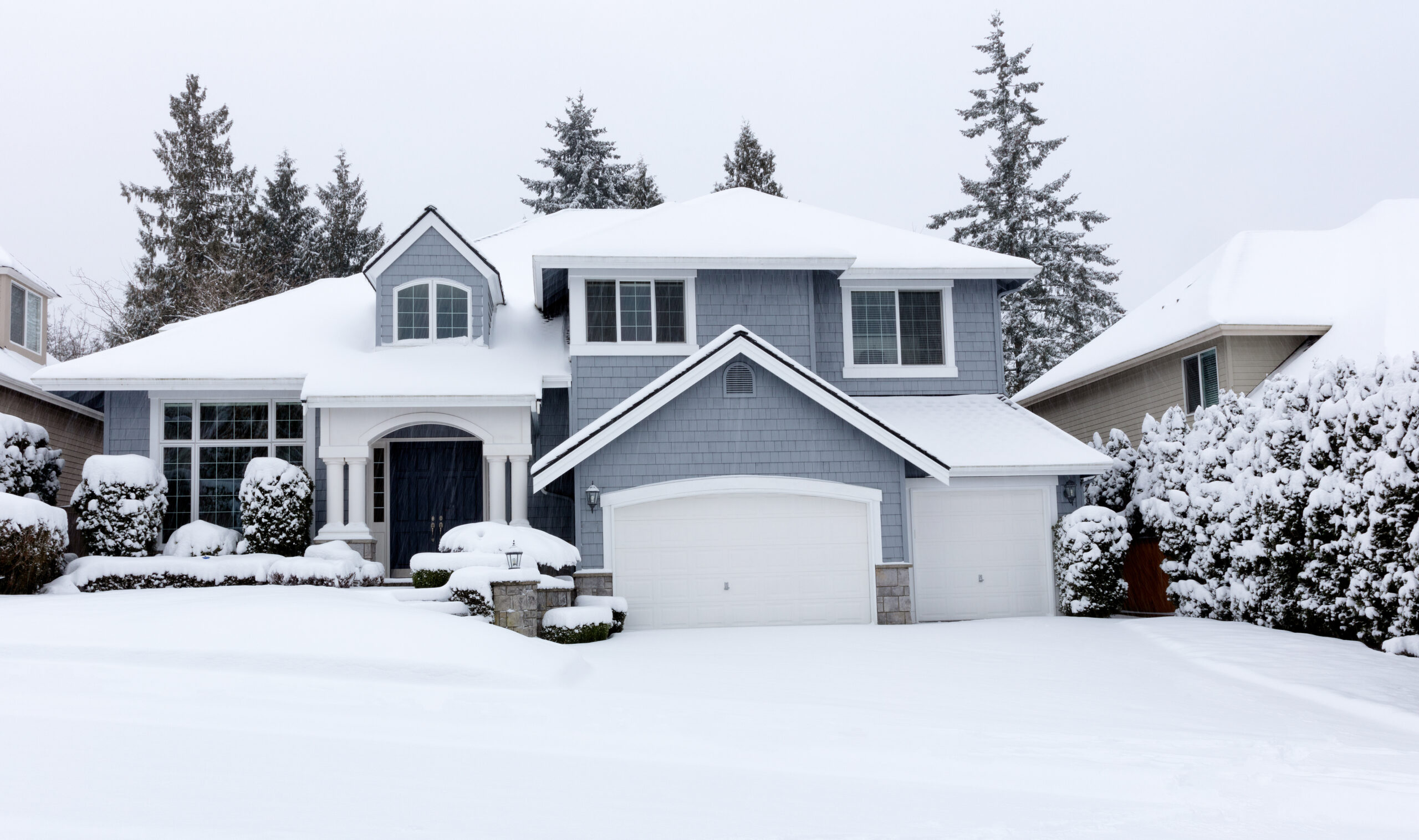Winterize Your Home

As the winter season slowly creeps upon us, extreme weather comes with it. Are you prepared and ready to winterize your home? Winterizing your home is ideal for those who live in colder climates, those who take long winter vacations, and regular travelers. The combination of the cold, snow, hail, and wind is a breeding ground for house damage. From the roof being damaged to the pipes freezing, there are a number of potential problems that could be costly to fix. Continue reading to learn how to prepare for the harsh winter conditions on your home by winterizing your property.
Before the First Snowfall
Leaves, sticks, and other debris from nature make their way onto your roof and gutters during the fall. Before the first heavy snowfall, it’s important to clear your roof and gutters to prevent the build up of ice and snow (ice dam), that can get under shingles and cause leaks and water damage in your home. If your house will be vacant for a long period of time, clear as much debris as you can before you leave the house. It may still be a good idea to have a local friend or contractor finish the job while you’re away – especially if you live in a state with frequent harsh winter conditions.
Properly Insulate
Is your attic properly insulated? If you’re not sure, check out this guide from Energy Star to see what the recommended insulation is best for your area. Adding insulation to your attic can help reduce the chances of an ice dam forming. Check your attic space before the winter weather starts by examining attic vents, checking for leaks, and taking a look at the insulation. Insulation is said to last anywhere from 80 to 100 years, but it can lose effectiveness as it ages. Insulation experts suggest replacing insulation every 15 years to assure it is doing the job efficiently. If your house will be vacant, know that insulation helps avoid hefty heating bills during the months you are gone. Good insulation leads to lower heating and cooling bills that will also be a plus if you decide to ever sell your home.
Check Your Chimneys
Dirty chimneys can cause chimney fires, which damages structures, destroy homes and injure or kill people, according to the Chimney Safety Institute of America. Whether you have a gas fireplace or wood-burning, be sure to make an appointment for your chimney to be inspected annually to check if cleaning or repairs are needed. Blocked chimneys from debris or animal nests can cause build up and push carbon monoxide into the house – which is obviously life-threatening to anyone in the house. If you’re going to be leaving your house vacant, close your chimney’s flue as well as any hearth doors. This helps prevent cold drafts from seeping in and making your heating systems work harder as well as deters any animals from entering through the chimney.
Replace Door Weather Stripping – Inspect the weather stripping around all exterior doors to check if they are in good shape. If the weather strip looks ripped, crushed, or has missing pieces in any way, it’s a good time to replace them.Close the door and check for any air-leaking gaps around all edges of the door. To go a step further, take a peek under the door. If you see any sunlight peaking through, you’ll need to either the threshold or install a door sweep. If you detect there is air leaking out but cannot figure out where, take a smoldering stick of incense and slowly pass it around the door. If there is a hole, even the slightest breeze will make the smoke stream dance in the area where there is a hole.
Caulk Cracks – One of the simplest, yet most effective ways to stop cold air infiltrating your home is to plug up any and all holes, cracks, and open seams around the exterior of your house. As far as filling in the holes on the exterior of your home, you have a few options. There’s latex caulk, concrete epoxy, and for the bigger cracks and holes – filler compound. If you’re not confident in performing this task, don’t hesitate to call in the professionals for help.
Reverse Ceiling Fans
Are you one of those people that only use ceiling fans in the summer? Well, did you know that reversing the direction of your ceiling fans in the winter can help keep you warm and save you money in HVAC heating? Most fans have a switch for reversing the fan’s rotation. In the summer, fans should be rotating counterclockwise to blow down cool breezes. However, in the winter, fans rotating clockwise will force warm air trapped at the ceiling down into the room.




